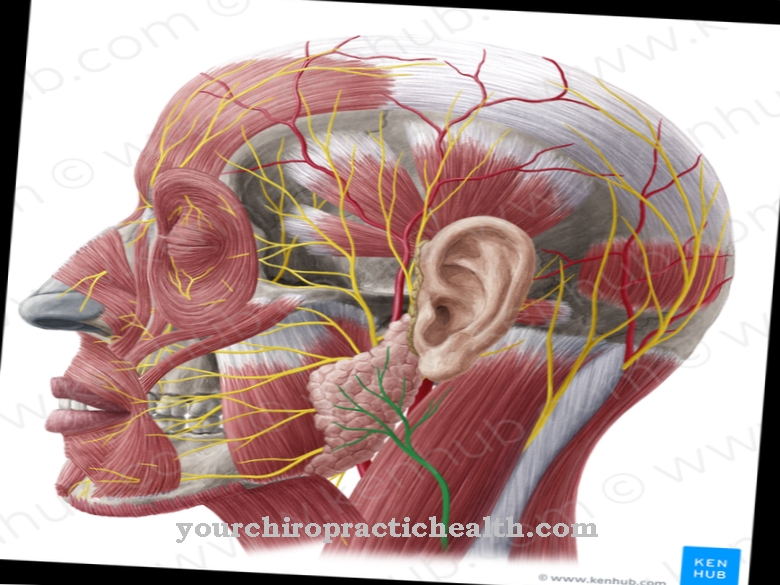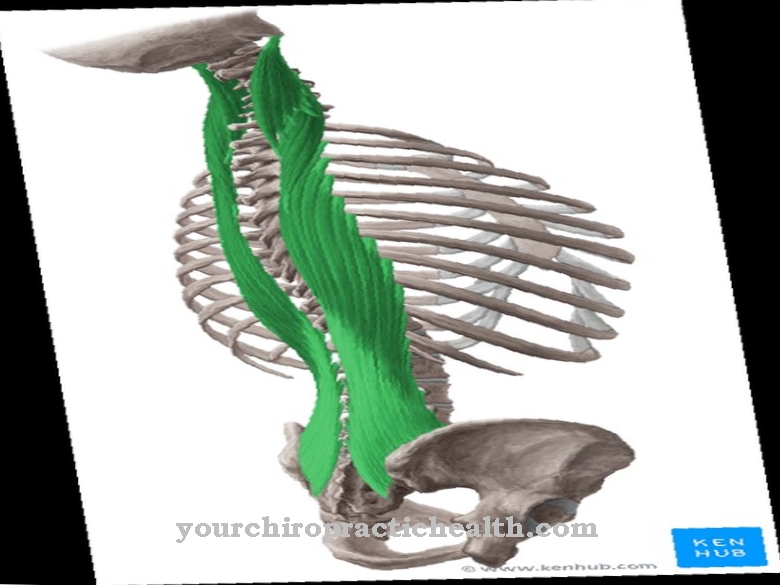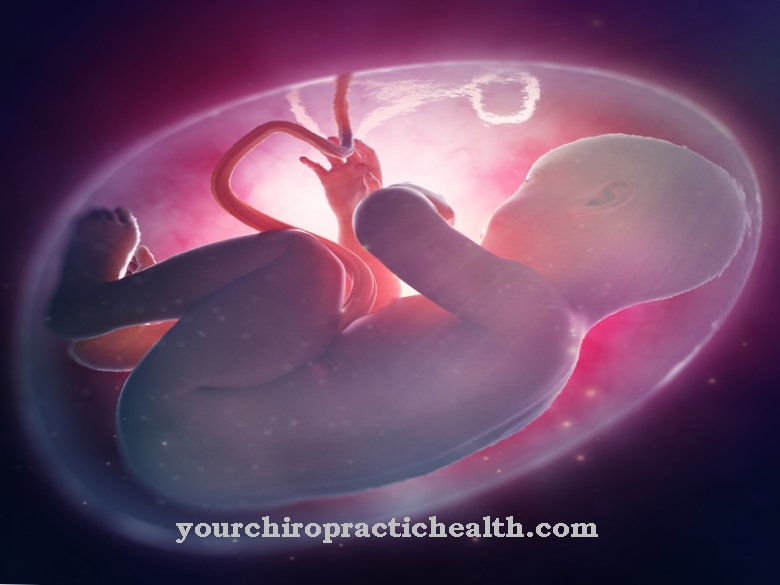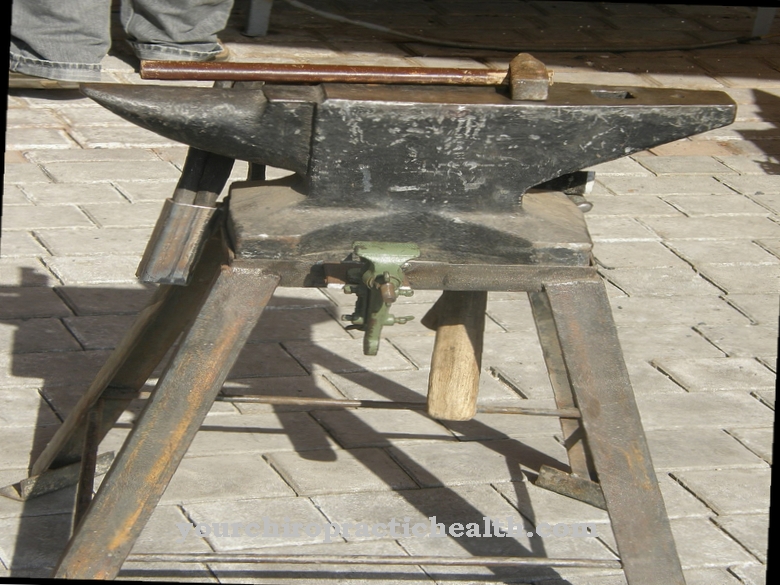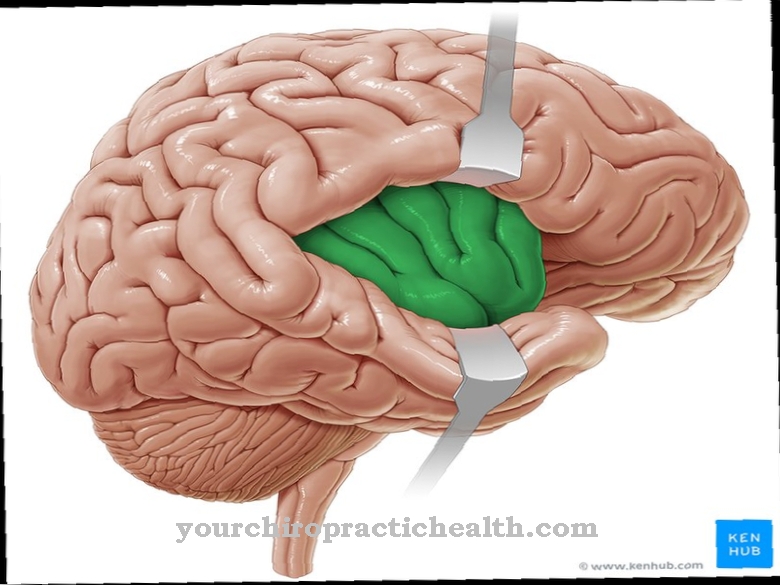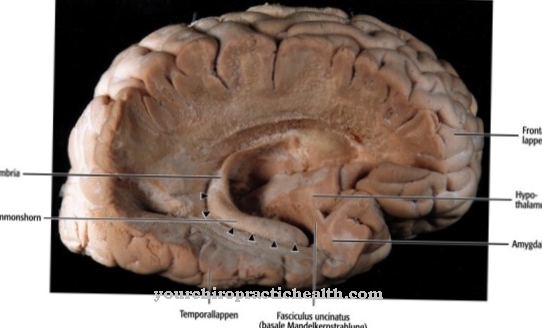Of the Aortic arch is practically a 180-degree bend of the main artery of the body, which transfers the ascending aorta, which is almost vertically upwards, into the descending aorta, which is almost vertically downwards. The aortic arch lies just outside the pericardium above the origin of the ascending aorta, which arises in the left ventricle. Three arteries or artery trunks branch off from the aortic arch and supply the head, neck and shoulders and arms.
What is the aortic arch?
The transition from the ascending aorta (ascending aorta), which arises in the left ventricle, to the descending aorta (descending aorta) is called the aortic arch. It is a kind of 180-degree bend just outside the pericardium.
The transitions from the ascending aorta to the aortic arch and further into the descending aorta cannot be defined in terms of cell biology, since the structure of the vessel walls in the course of the aforementioned sections of the aorta is identical. Three arteries branch off from the aortic arch, the common arm-head artery trunk (Truncus bracheocephalicus), the left carotid artery (Arteria carotis communis left) and the left subclavian artery (Arteria subclavia left). After only a few centimeters, the arm-head artery trunk branches into the right carotid artery (right common carotid artery) and the right subclavian artery (right subclavian artery).
Arteries that supply blood to the head, neck, shoulders and arms all arise from the aortic arch. Prenatally there is a direct connection between the aortic arch and the pulmonary artery of the pulmonary circulation (ductus arteriosus Botalli) running directly below the arch. This short-circuits the pulmonary circulation, which is only activated when lung breathing starts immediately after birth. Normally, the connection closes, so that both circuits, the pulmonary circuit and the body circuit, run separately from one another.
Anatomy & structure
The aorta opens into the cranial part of the left ventricle, to the right of the atrial septum, and forms the central, arterial trunk of the body's circulation, from which all other arterial trunks and main arteries arise. The aorta has an initial diameter of 2.5 to 3.5 cm and runs almost vertically upwards.
Approximately at the exit point from the pericardium (pericardium), the aorta merges into the aortic arch without any noticeable transition, which deflects the aorta downwards by 180 degrees. The three-layer wall structure of the aortic arch is identical to that of the aorta and the other large arteries. The inner closure is the intima (tunica intima), which is composed of a single-layer epithelium, a loose connective tissue layer and an elastic membrane. This is followed by the middle layer, the media (tunica media). It consists of elastic fibers and one or more elastic membranes as well as smooth muscle cells.
The externa (tunica externa or tunica adventitia) connects to the outside. It is characterized by elastic and collagenous connective tissue and is the carrier of the vessels that supply the arterial wall, so to speak the vessels of the vessels (vasa vasorum), and it is the carrier of the nerve fibers that control the lumen of the aortic arch. On the lower side of the aortic arch is a small receptor body (glomus aorticum) enveloped by connective tissue, which contains chemoreceptors that measure the partial pressure of oxygen in the lumen of the aortic arch and transmit it to the brain via the vagus nerve. The signals are mainly used to control breathing activity.
Function & tasks
The aortic arch primarily serves to divert the ascending branch of the aorta into the descending branch. In addition, together with the other large body arteries, it performs a kind of wind chamber function. The arterial systolic blood pressure peak is alleviated by the elastic walls of the arteries. The lumen of the great arteries, including the lumen of the aortic arch, widens and relieves the pressure spike. During the subsequent diastolic phase of the chambers, the aortic valve closes so that the necessary residual pressure is maintained in the arterial part of the body's circulation.
Through the three arterial branches in the aortic arch, it is responsible for supplying the head, neck, shoulders and arms with oxygen-rich blood. The aortic arch, as a carrier of chemoreceptors, has an indirect function in regulating respiratory activity. The chemoreceptors bundled in the glomus aorticum react sensitively to a decrease in the pH value towards acidic and to a decrease in the oxygen partial pressure. The nerve signals are processed in the brain and converted into the release of neurotransmitters, which stimulate an increase in the respiratory drive.
Diseases
Diseases and complaints that are associated with the aortic arch are usually acquired or genetically determined constrictions or closures (stenoses) in the outgoing vessels or in the aortic arch itself. The closure of one or more of the three branches in the aortic arch is called Called aortic arch syndrome.
Atherosclerotic changes in the intima of the vessels or inflammatory processes in the vessel walls are possible causes. Depending on the affected branch in the aortic arch, mild to severe symptoms appear in the poorly supplied regions. If the internal carotid artery, which also supplies the brain, fails, there are typical neurological deficits such as visual disturbances, noises in the ears, lack of concentration and even impaired consciousness and speech. The aortic arch is affected in about 10 percent of cases of aortic dissection.
Tearing the intima, the inner layer of the blood vessel, can lead to light to severe bleeding between the intima and the media, the middle layer, and cause serious, life-threatening aneurysms. In very rare cases, a genetically determined malposition can be a coarctation of the aorta, a vascular malformation that usually occurs with inherited heart defects. In many cases, if monosomy X (Turner syndrome) is present, coarctation of the aorta is also observed.

